The Council of Europe and the Human Right to a Clean, Healthy and Sustainable Environment
EUROPARC advocates for the implementation of the Human Right to a Clean, Healthy and Sustainable Environment and also the Rights of Nature. Below you can read an update of the progress incorporating this into the European legal system.
The Council of Europe and the Human Right to a Clean, Healthy and Sustainable Environment
The Council of Europe (CoE) is an international organisation of all European countries (EU and non-EU, but recently excluding Russia for obvious reasons) to promote democracy and inclusion, human rights, and the rule of law. EUROPARC is actively engaged in this space, advocating for the priorities of Protected Areas across all of Europe.
Last year we published an update on the progress in the United Nations space on acknowledging the right to a clean, healthy and sustainable environment as a human right. The follow up of this decision is for it to be incorporated into national and regional jurisdiction before it can be used as a tool to hold entities accountable for their environmental damage through actions or inactions. Within Europe, there are countries which have or are making progress to incorporate this human right into their constitutions or national law. During an event at the European Centre for Youth in Strasbourg, three speakers presented the progress on the legal aspects on implementing and enforcing the protection and conservation of nature including climate action at the regional level within the Council of Europe.
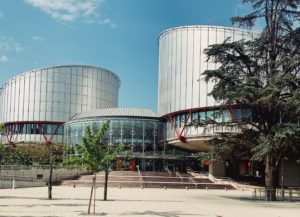
The European Court of Human Rights by Zsófia Vera
The first speaker was Nataliy Kobylarz, a senior lawyer at the Registry of the European Court of Human Rights (ECtHR) and a lecturer on European Human Rights. She presented the progress and challenges of implementing this human right into the ECtHR – which is an international legally binding court to which individuals can bring cases against one or more states.
While in Africa people are guaranteed the right to ‘a general satisfactory environment favourable to their development’ through the African Charter on Human and People’s Rights, and similarly the Inter-American Court of Human Rights recognises the protection of the right to a healthy environment through the American Convention on Human Rights, the European Court of Human Rights is still a few years from the same. This is because it only covers civil and political rights and not cultural and social rights (sometimes called second generation rights and are not enforced by the ECtHR but a smaller committee with less power) which is where the African and American courts drew their argument from.
Currently, to bring a case to the European Court of Human Rights, there has to be a clear event that creates a “victim”. Secondly there needs to be a clear argument that this case could not be solved at a national level. Of six recent cases brought to the ECtHR only three have not been dismissed because of these two previously mentioned conditions. The three that will be seen in court are:
- #Klimaseniorinnen: a group of >64 year olds who are taking Switzerland to court for not doing enough to prevent the heatwaves, which cause health problems in elderly women in particular. This case has been in the works for over 20 years already with more than 45 000 deaths attributed to heatwaves in Europe.
- Carême v. France: a case where a former lawyer is fighting for the “right to a normal private and family life”, which is at risk due to France’s inadequate climate action. Damien Carême, former mayor of the Commune of Grande Synthe in France, had previously had his case seen in the French Court but they dismissed the individual aspect of it and it has now been brought to the ECtHR.
- Duarte Agostinho and Others v. Portugal and 32 Other States: This is also known as the case of the six Portuguese children, which is based on the rights to life, to privacy (which includes mental and physical well-being) and the right not to experience discrimination. This case has been sent to the Grand Chamber.
The first two cases will be seen in the Grand Chamber on the 29th of March and the third is still unknown. All of these are based on previous human rights and having a clear recognition of the human right to a clean, healthy and sustainable environment would be a huge step forward to having environmental cases heard in the ECtHR.
Another legal tool is the Rights of Nature, which have been adopted in a few countries such as New Zealand, Ecuador and Pakistan. This would be a more eco-centric way of using the law to protect the environment than the human right, which always requires a human to be involved. The Rights of Nature would give legal personhood either to Mother Nature, to an ecosystem/feature (such as a river) and they would be represented in court by an ombudsman. However, in the current scope, it does not seem possible for the European Court of Human Rights to include the Rights of Nature into its procedures.
Secondly, David Milner, head of the Steering Committee for Human Rights (CDDH) at the Council of Europe, shared the work that has been done so far. In the 2021 manual, the latest edition from the CDDH, it states that:
The Committee of Ministers recommends that the governments of the member States reflect on the nature, content and implications of the right to a clean, healthy and sustainable environment and on that basis, actively consider recognising it at the national level
This doesn’t actually require them to recognise the human right but only to “reflect on the nature, content and implications” because there is no agreed definition of how the right will be implemented. While it may seem discouraging, he went on to share that change in the hard laws with obligations were often preceded by soft laws such as in recommendations, and that the Council of Europe was at the “soft law stage” but actively considering the next stage. Currently there is a feasibility study to be completed in 2024, which will look at many aspects of the implementation of a possible hard law on the right to a clean, healthy and sustainable environment.
One of the “soft law” approaches is by using the Bern Convention and the Landscapes Convention, which protect natural areas and landscapes across Europe for their inherent value as well as their benefits to us. The last speaker, Gianluca Silvestrini, head of the Biodiversity Division of the Council of Europe explained how the Bern Convention uses the soft law approach to have a case-file system for complaints with the following procedure:
- civil society can file cases of breaches with the Bern Convention Secretariat
- an explanation from the government is requested
- the Bern Convention standing committee calls for an independent analysis
- mitigation measures are recommended
- the Bern Convention Secretariat monitors implementation
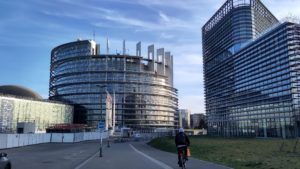
The European Parliament in Strasbourg
This system is not legally binding and additionally, funding for the Bern Convention Secretariat has shrunk by 85% in the last 25 years, something that the International NGO Committee chaired by EUROPARC, has been trying to draw attention to through a letter to the Secretary General to the Council of Europe.
Nevertheless, there is hope for more action in the environmental space. Iceland currently has the presidency of the Council of Europe and one of their top priorities is Climate Change. Additionally, in May there will be the Summit to discuss the future direction of the Council, which is an important occasion as these summits are only held every 20 years. EUROPARC will continue to work with and through the Council of Europe, its conventions, the INGO Conference and the ECCH&H Committee to develop an integrated approach between human rights, environment, heritage and health.
Communicating your youth work: Data protection, safeguarding and increasing visibility
Communicating your youth work: Data protection, safeguarding and increasing visibility
- EUROPARC Webinar
- 06.03, from 14:30 – 16:00 CET
- Attendance is free, but registration is necessary
Showcasing the importance of involving young people in Protected Areas is crucial to influence perceptions of decision-makers, local cummunities and colleagues. In this webinar, we have three experts sharing their knowledge with you, to grow your confidence and help you increase the visibility of the work you do with young people in Protected Areas through school visits, family days, the Junior Ranger and Youth+ Programmes, in a safe and compliant way.
Our first speaker, Ilaria Pizzini, a compliance expert from Italy, will introduce us to the data protection regulations. After this presentation, everyone should feel comfortable, knowing how to be mindful of data protection and what goes into a parental consent form.
Our second speaker, Lou Willis-Keeler, is the CEO of Psych-Logical LTD, a consultancy advising organisations in the UK on how to work with young people. For this session, she will be sharing the every-day human experiences of communicating with young people to ensure everyone feels safe and is aware what to do if they don’t.
Our last speaker, Franciska Maarse is a communications officer from IVN Natuureducatie in the Netherlands. She will be sharing many tips and tricks to help you increase the visibility of environmental education across different platforms.
Join the webinar to learn, ask questions or share concerns and experiences. We welcome you to share this invitation with your colleagues.
Webinar Programme
Welcome and Introductions
Jessica Micklem-Kolenić, Youth Officer at EUROPARC Federation.
Youth and Data Protection: Rules, Tips and Tricks
Ilaria Pizzini, Data Compliance Expert
Q&A
Creating a Safe Space for All
Lou Willis-Keeler, CEO of Psych-Logical LTD
Q&A
Increasing and Improving Visibility
Franciska Maarse, Communications Officer, IVN Natuureducatie
Q&A
The webinar will last 1.5 hours
About the speakers
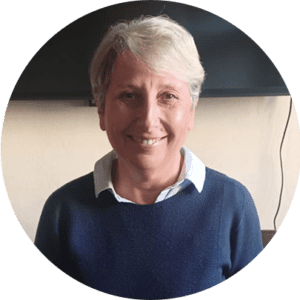
Ilaria Pizzini, Data Compliance Expert
Ilaria has worked for many international organisations and industries, i.e. Coop (Modern Retailing), Xerox, Datamat, Digital Equipment (Information Technology), and in particular in UNICEF Italian NatCom where she managed the transition from Italian privacy regulations to the EU’s General Data Protection Regulation (GDPR) from the perspective of processes, systems, procedures and documentation. She holds a Masters degree from LUISS Business School in Governance in Privacy, is a qualified Data Protection Officer with much experience in both human resources and complaince (including, data protection, safety and security etc.).

Lou Willis-Keeler, CEO of Psych-Logical LTD
Lou is a specialist safeguarding and behavioural change consultant, working in the informal education sector. With over 20 years practice based experience and a Masters Degree from Durham University in Community and Youth Work, Lou works with organisations to help them create safe spaces for teaching and learning, improving engagement and increasing impact.

Franciska Maarse, Communications Officer, IVN Natuureducatie
Franciska is the communications officer of IVN Natuureducatie, a non-profit nature education organisation based in Amsterdam. She focusses on communication around youth programs of all ages and has a background in sustainable behavior change and psychology. Her passions include writing, designing, storytelling (and when out of the office; singing).

AND SO IT BEGINS! EUROPEAN NATURE ACADEMY Induction Meeting in Schneverdingen, Germany
ENA Induction Meeting
From 13 to 17 February, LIFE ENABLE launched the European Nature Academy (ENA). 59 Natura 2000 and Protected Area managers from 24 countries gathered in Schneverdingen, Germany!
The event was hosted by LIFE ENABLE project partner, Alfred Toepfer Akademie für Naturshutz.
The meeting introduced the ENA platform, which will offer online competence-based courses and capacity-building opportunities, especially for managers of Forests and Marine ecosystems. The courses are designed to provide a range of tailor-made modules that will enable Natura 2000 and Protected Area managers to become more effective, confident and competent practitioners in their everyday work.
Networking the ENA participants
The Induction meeting was designed to bring the first intake of ENA participants together. The 3-day programme included a variety of interactive sessions to let participants get to know each other, connect and share their experiences from the Natura 2000 sites and Protected Areas that they manage.
Through a World Café, participants introduced themselves and each other to their places of work and compared management challenges and practices.
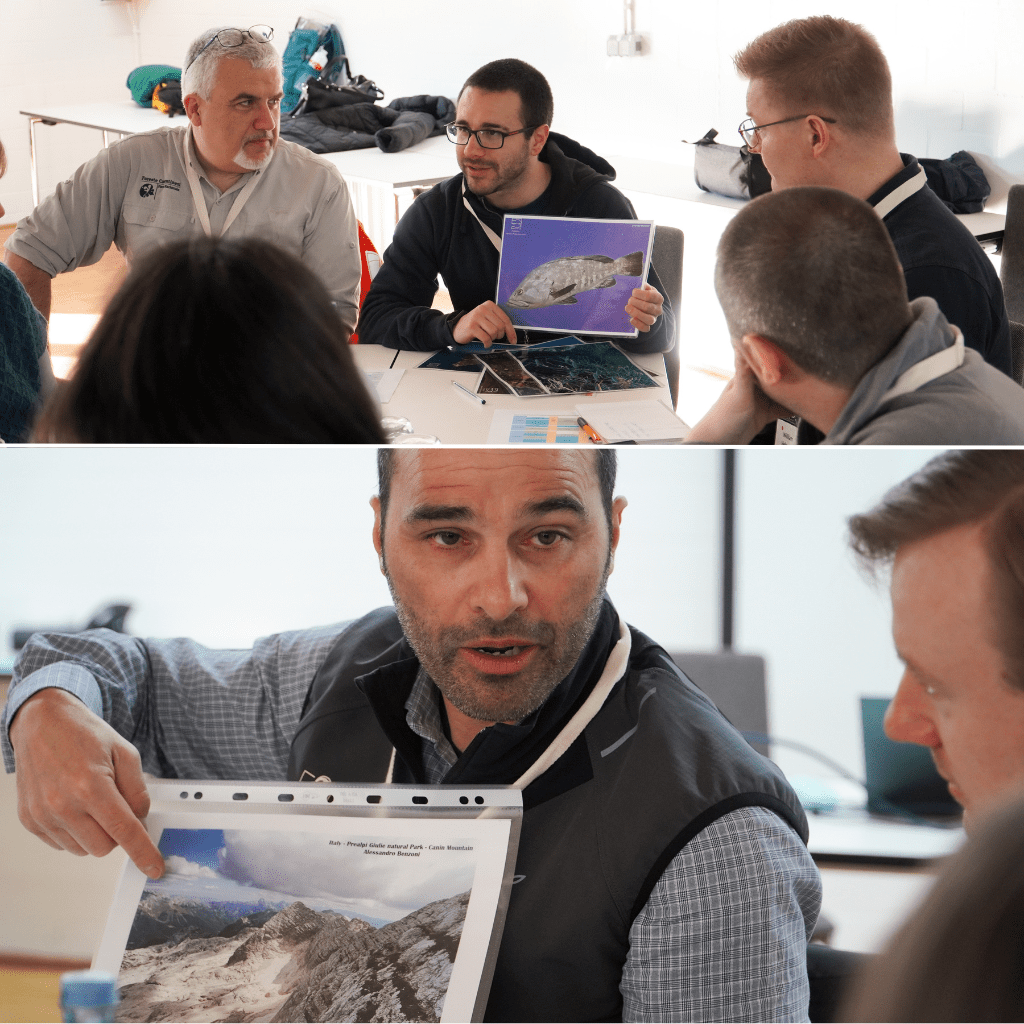
ENA Induction Meeting World Café
Learning Styles
Participants compared their preferred Learning Styles – whether people learn more visually, aurally, by reading, by kinaesthetic means or in multimodal ways – understanding the different ways individuals learn will be useful for the rest of their ENA journey.
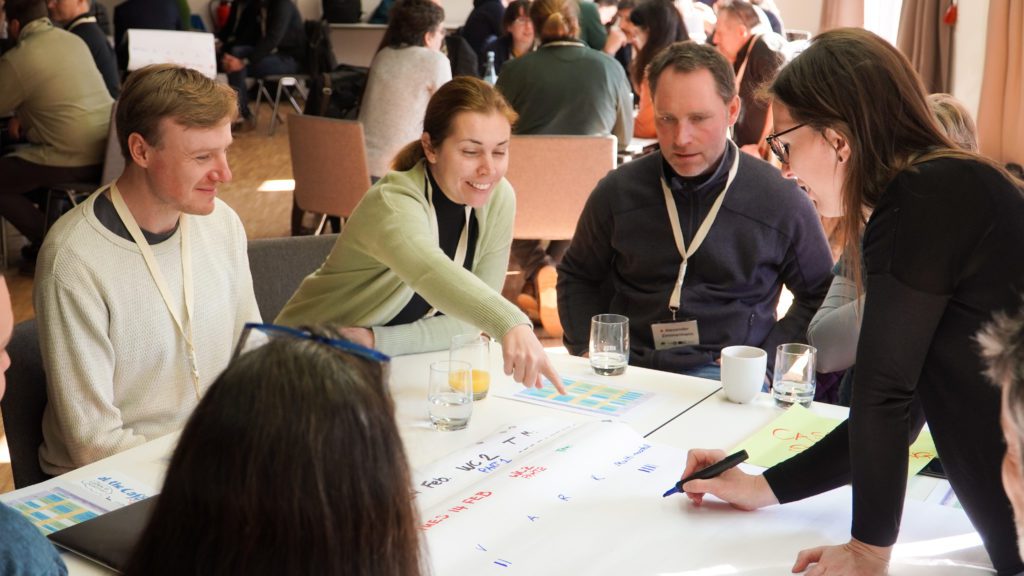
ENA Induction Meeting Learning styles
Interactive sessions
Multiple interactive sessions enabled participants to unwrap core competencies that apply in their work, including Personal Communication Competencies, Communication Tools & Social Media, and Written & Presentation skills.
Furthermore, participants practised using the new Training Needs Assessment Tool developed by LIFE ENABLE project partners, ProPark.
Additionally, they were introduced to the European Nature Academy platform, Marine, Forest and Train the Trainers Courses.
Working as teams
To facilitate collaboration and co-learning, participants were allocated to sub-groups, which we have called learning ‘PODs’. Working in their PODs, they worked through the Impact Assessment Exercise on Thursday – having completed the exercise’s 4 steps, each POD prepared and presented the results of their work.
Meet our nine ENA PODs:
1. Adaptive Seagulls
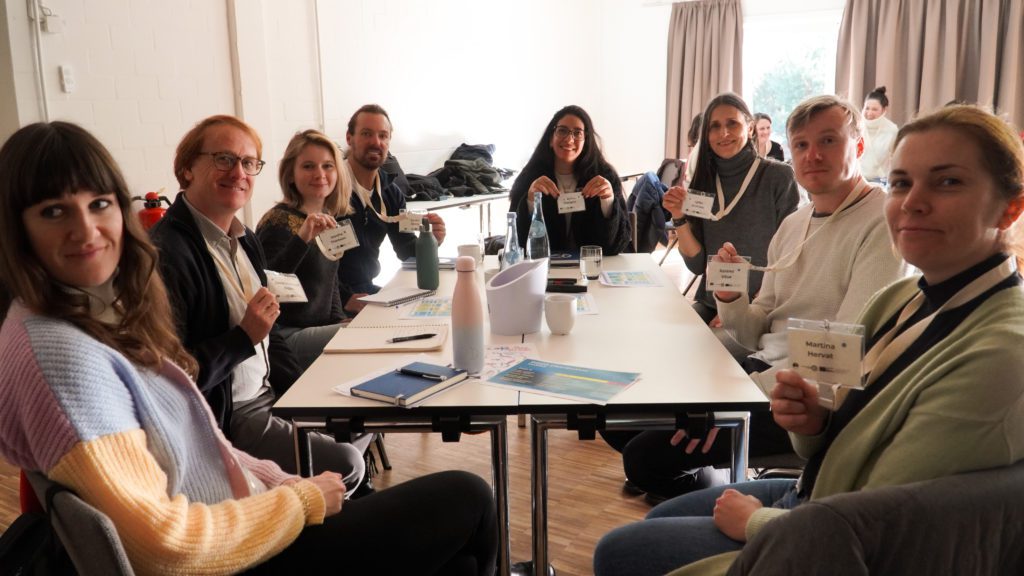
ENA POD Adaptive Seagulls
2. For-rest
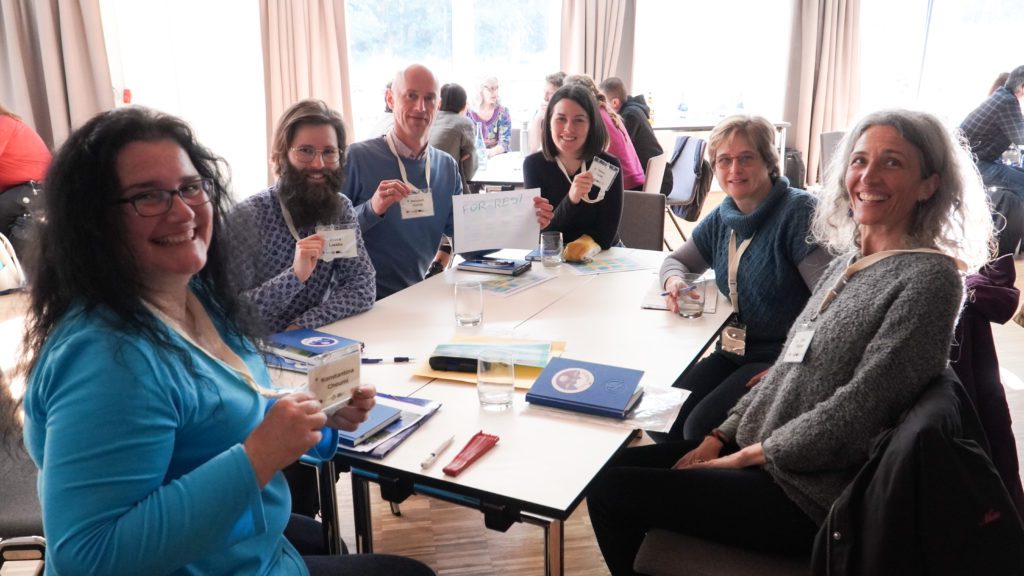
ENA POD For-rest
3. Forest Gump
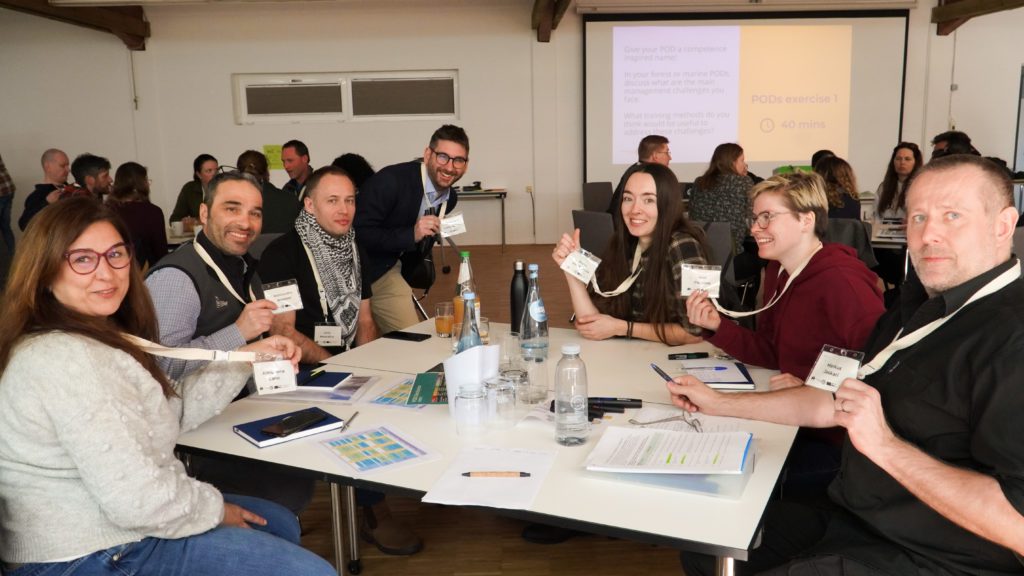
ENA POD Forest Gump
4. Resilient Forest
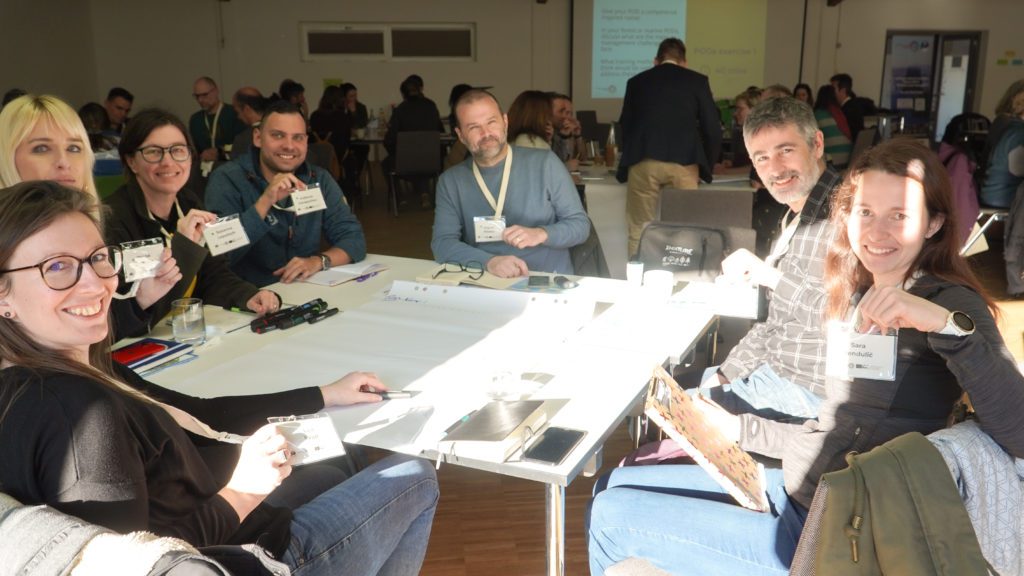
ENA POD Resilient Forest
5. Forest Navigators
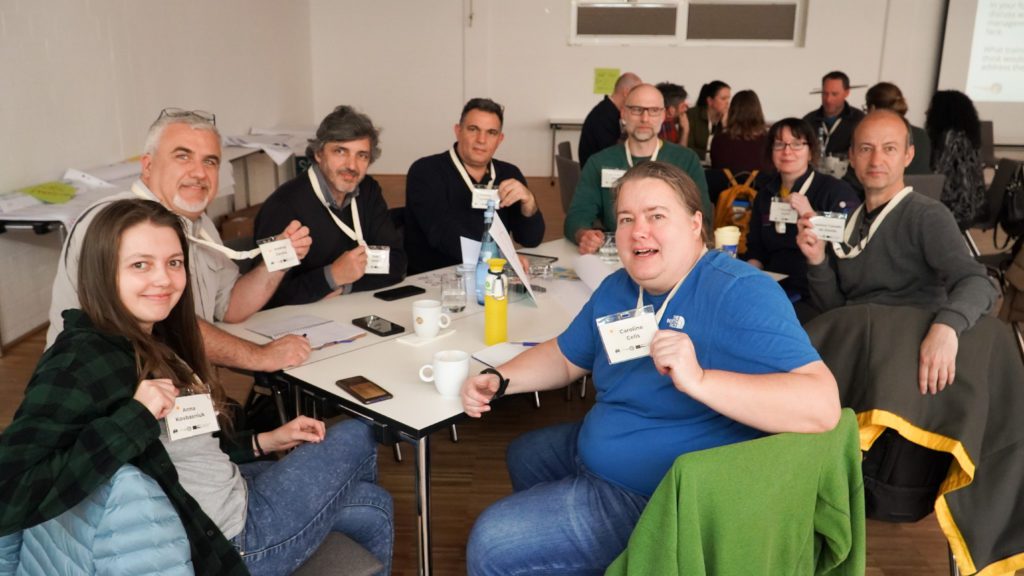
ENA POD Forest Navigators
6. Power of Diversity
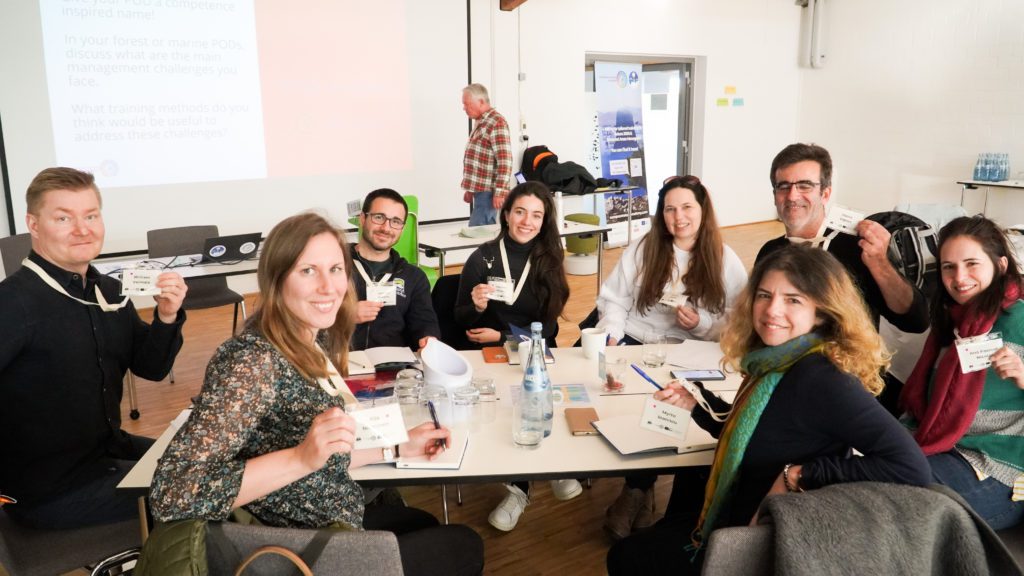
ENA POD Power of Diversity
7. Yellow Submarine
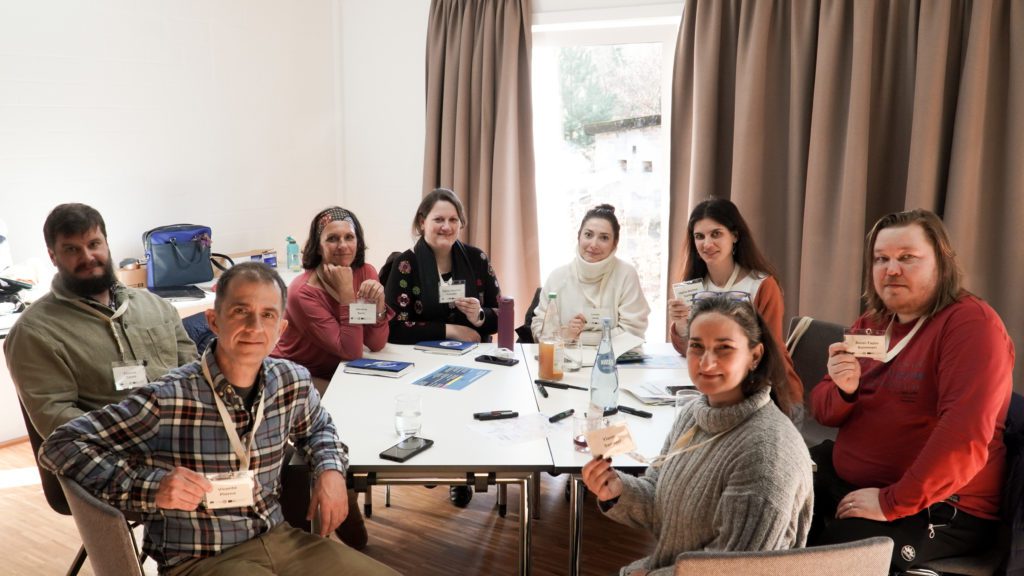
ENA POD Yellow Submarine
8. We Can! (We, Culture and Nature)
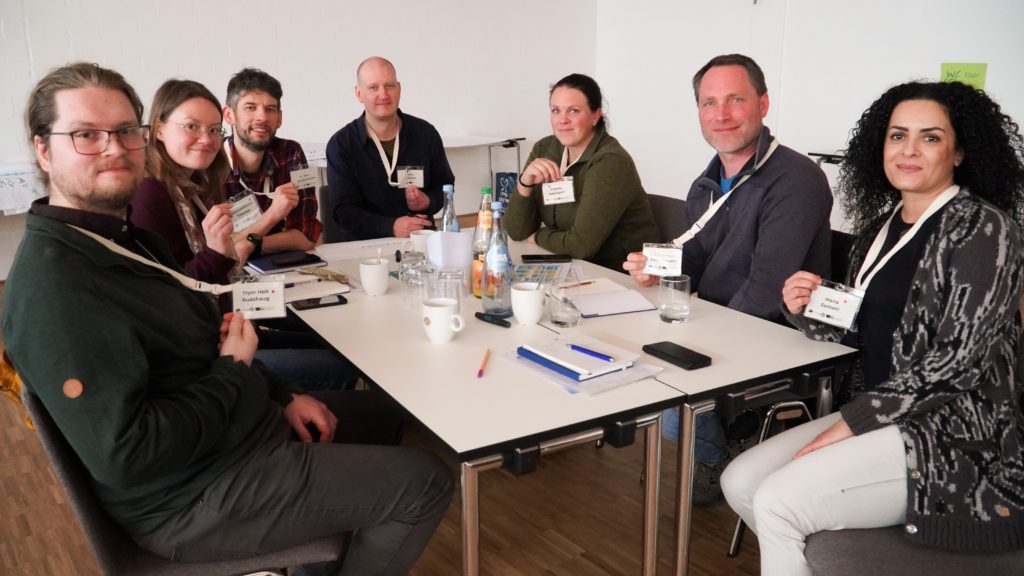
ENA POD We Can!
9. Oak
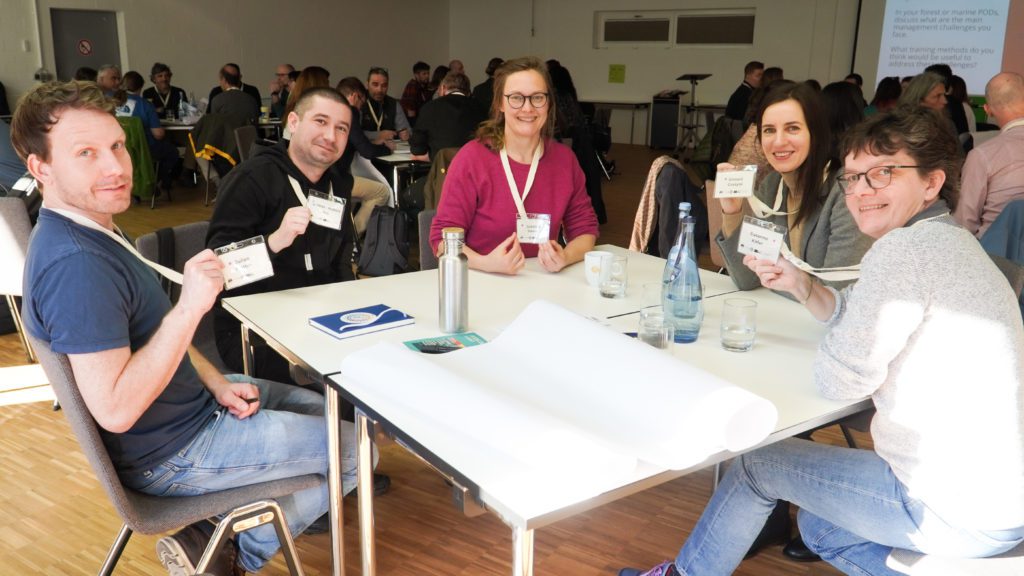
ENA POD Oak
The best is yet to come!
Based on the pure energy, positive enthusiasm and hunger to learn so openly evident in the Induction meeting, we could not have asked for a better start to the European Nature Academy.
It is already clear that the connections being initiated by the ENA will last long beyond the LIFE ENABLE project’s duration.
We whole-heartedly thank all our ENA-ers for their commitment and positivity and wish each and every one of them huge success in their professional development as they embark on their ENA journey.
Creating Memories
Make sure to check out the highlights from the Induction Meeting in a short video and photo album:
New EU Action Plan to restore marine ecosystems for sustainable and resilient fisheries
IJmuiden, 25-26 March 2002. A fishing boat leaves the port of IJmuiden to go fishing in the North Sea. The nets are hauled in to recover the catch. Photo by Jan van de Vel - European Communities, 2002.
Yesterday March 21st, the European Commission published the Action Plan: Protecting and restoring marine ecosystems for sustainable and resilient fisheries as part of the set of measures aiming to improve the sustainability and resilience of the EU´s fisheries and aquaculture sector.
Towards lower impact fisheries and sustainable stocks
This action plan has been designed to reinforce the support provided by the Common Fisheries Policy´s to guarantee that healthy fish stocks and rich biodiversity levels are sustained in time in our oceans. The main actions presented aim to reduce the negative impacts of fishing activities on the marine ecosystems, especially those related to by-catch of sensitive species and its consequent effects on the marine food webs, and increase the selectivity of fishing gears.
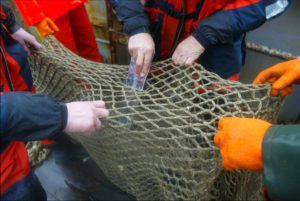
IJmuiden, 25-26 March 2002.
Coast Guards and Official Control Inspectors set out to control fishing vessels in the North Sea.
The inspectors control the net the fishermen use. Photo by Jan van de Vel – European Communities, 2002.
Additionally, the action plan will contribute to the objectives of the recently agreed Kunming-Montréal biodiversity agreement and in delivering the EU Biodiversity 2030´s environmental targets so the EC calls all Member States to put into place adequate fisheries conservation measures to effectively manage Marine Protected Areas. These measures should embrace actions to protect fish spawning and nursery areas, reduce fish mortality rates and restore core areas for sensitive species and habitats.
On another line, the action plan aims to decrease seabed disturbances originated by fishing apparels in MPAs and the Commission calls Member States to progressively reduce mobile bottom fishing in all MPAs by 2030, as well as to forbid it in newly established MPAs. It is noteworthy that the seabed habitats comprised within MPAs play a pivotal role in the protection of marine biodiversity, as they often constitute biodiversity hotspots, and act as blue carbon reservoirs that are very needed in tackling climate change impacts.
Other measures to improve EU’s fisheries and the aquaculture sector
Together with the Action Plan: Protecting and restoring marine ecosystems for sustainable and resilient fisheries three other elements that conform the package of measures presented by the European Commission are been presented:
- a Communication on the Energy Transition of the EU Fisheries and Aquaculture sector;
- a Communication on the common fisheries policy today and tomorrowand
- a Report on the Common Market Organisation for fishery and aquaculture products.
These other measures aim to promote the use of cleaner energy sources, such as renewable and low-carbon power sources, and reduce the dependency of the fishing sector on fossil fuels, making it less vulnerable to increases in energy prices. The main goal of this energy transition is to reach climate neutrality by 2050, as it is reflected in the European Green Deal. In this context, an Energy Transition Partnership for EU Fisheries and Aquaculture it is being proposed in order to bring together all stakeholders to collectively address the challenges this transition entails.
Additionally, the Commission proposes the creation of a ‘Pact for Fisheries and Oceans”. Since the CFP constitutes the main legal framework to address the challenges that EU fisheries and the seas and, as of today, several obstacles to achieve its full implementation remain in place, this pact will bring together all stakeholders and the Commission in order to tackle them. The pact will allow to open a dialogue between the parts, build common understanding of the objectives to be achieved and help adapt the CFP where necessary.
Much of our economy depends on nature. Fisheries are quite possibly the sector where this link is most direct. Europe’s marine ecosystems and the fish, shellfish, algae, and plants that are part of them are crucial to the economic viability of fisheries. With these proposals we aim to build a sustainable relationship with our seas. The European Commission will work with local fishing communities, the aquaculture and fisheries sector and help them adopt sustainable practices, from reducing energy usage to using more selective fishing gear. As part of efforts to restore and protect nature, we also ask Member States to phase out bottom trawling in fragile areas. When we ensure the sustainability of fisheries we invest in the resilience and future of the sector and its workers. Working together, we can find the right balance and establish healthy marine ecosystems all over Europe -Frans Timmermans, Executive Vice-President for the European Green Deal – 21/02/2023
Resources of interest
For a quick overview on the Actions for sustainable and resilient fisheries, aquaculture and marine ecosystems, visit this Factsheet.
For detailed information on the four elements that conform the Commision´s package of measures to improve the sustainability and resilience of the EU’s fisheries and aquaculture sector, please visit the documents below:
EU Action Plan: Protecting and restoring marine ecosystems for sustainable and resilient fisheries
Communication on the common fisheries policy today and tomorrow
Report on the results of Common Market Organisation for fishery and aquaculture products